Our great invited speakers
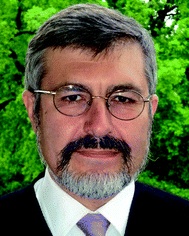
Igor Sokolov
Humboldt University Berlin
Physics and mathematics of anomalous diffusion
Experiments on single particle tracking in biological and artificial membranes and in living cells show that the particle's diffusion in such surroundings is often anomalous, showing strong deviations from the Fick's law predicting the mean squared displacement growing as the first power of time. In the present talk we concentrate on systems showing subdiffusive behavior. After discussing pertinent situations we will try to give a classification of anomalous diffusion regimes based on physical reasons in search for the order in the large Zoo of corresponding mathematical models. Our discussion will concentrate on the connection of anomalous diffusion with the type of disorder through which the intrinsic complexity of the system is described when passing from a physical to a mathematical model. We moreover discuss practical methods for disentangling the influences of structural and energetic disorder in pure cases and for anomalous diffusion of the mixed origins.
Karl Friston
Scientific Director, Welcome Trust Centre for Neuroimaging at University College London, UK
Life as we know it
This lecture presents a heuristic proof (and simulations of a primordial soup) suggesting that life – or biological self-organisation – is an inevitable and emergent property of any (ergodic) random dynamical system that possesses a Markov blanket. This conclusion is based on the following arguments: if the coupling among an ensemble of dynamical systems is mediated by short-range forces, then the states of remote systems must be conditionally independent. These independencies induce a Markov blanket that separates internal and external states in a statistical sense. The existence of a Markov blanket means that internal states will appear to minimise a free energy functional of the states of their Markov blanket. Crucially, this is the same quantity that is optimised in Bayesian inference. Therefore, the internal states (and their blanket) will appear to engage in active Bayesian inference. In other words, they will appear to model – and act on – their world to preserve their functional and structural integrity, leading to homoeostasis and a simple form of autopoiesis.
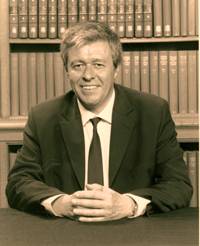
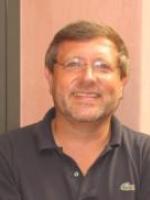
Gustavo Deco
Head of Computational Neuroscience Group, Center for Brain and Cognition, Universitat Pompeu Fabra
Resting Brains Never Rest: Computational Insights
Resting-state networks (RSNs), which have become a large focus in neuro-imaging research, can be best simulated by large-scale cortical models when networks teeter on the edge of instability. In this state the functional networks are in a low firing stable state while they are continuously pulled towards multiple other configurations. Small extrinsic perturbations can shape task-related network dynamics, while perturbations from intrinsic noise generate excursions reflecting the range of available functional networks. This is distinctly advantageous for the efficiency and speed of network mobilization. Thus, the resting state reflects the dynamical capabilities of the brain, which emphasizes the vital interplay of time and space. We propose a new theoretical framework for RSNs that can serve as a fertile ground for empirical testing.
Wolfgang Maass
Institute for Theoretical Computer Science, Technische Universität Graz , Austria
Stochastic computation in cortical microcircuit models
I will examine the question how cortical microcircuits can encode
knowledge in the form of probability distributions, and how they can
learn these distributions. I will also address the question how they can
carry out probabilistic inference for such internally stored
distributions, and merge in this way knowledge from longterm memory with
information from new spike inputs.
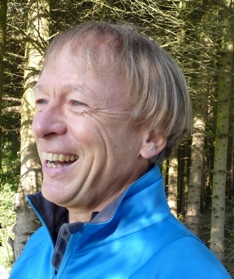
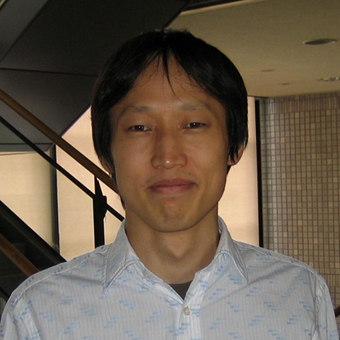
Jun Morimoto
Head of Department, Department of Brain Robot Interface(BRI), ATR Computational Neuroscience Labs, Kyoto Japan
Brain-robot Interfaces for Exoskeleton Robot Control
Since many countries are facing the problems associated with an aging population, the development of an exoskeleton robot to assist user movements is becoming important research topic. In particular, exoskeleton robots can be used as prosthetic devices for patients such as stroke patients and spinal cord injury patients in rehabilitation programs. In recent years, it has been found that using brain activity to control a robotic assistive system can promote recovery of the arm and hand functions. Therefore, it may be possible to enhance recovery of lower limb motor functions by controlling an exoskeleton robot for assisting the lower limbs through brain activity. In this talk, we introduce our EEG-Exoskeleton robot system, where the exoskeleton robot is connected to the EEG measurement system so that the users can control the exoskeleton robot by using their brain activity.
Auke Ijspeert
Head of Biorobotics Laboratory (BioRob) at Swiss Federal Institute of Technology at Lausanne
Central pattern generators for controlling locomotion: from biology to robotics
The ability to efficiently move in complex environments is a fundamental property both for animals and for robots, and the problem of locomotion and movement control is an area in which neuroscience and robotics can fruitfully interact. Animal locomotion control is in a large part based on central pattern generators (CPGs), which are neural networks capable of producing complex rhythmic or discrete patterns while being activated and modulated by relatively simple control signals. These networks are located in the spinal cord for vertebrate animals. In this talk, I will present how we model pattern generators of lower vertebrates (lamprey and salamander) using systems of coupled oscillators, and how we test the CPG models on board of amphibious robots, in particular a salamander-like robot capable of swimming and walking. The models and robots were instrumental in testing some novel hypotheses concerning the mechanisms of gait transition in vertebrate animals. I will also present control architectures based on pattern generators implemented as coupled dynamical systems that we use to control the locomotion of various robots (quadruped, humanoid and reconfigurable modular robots).
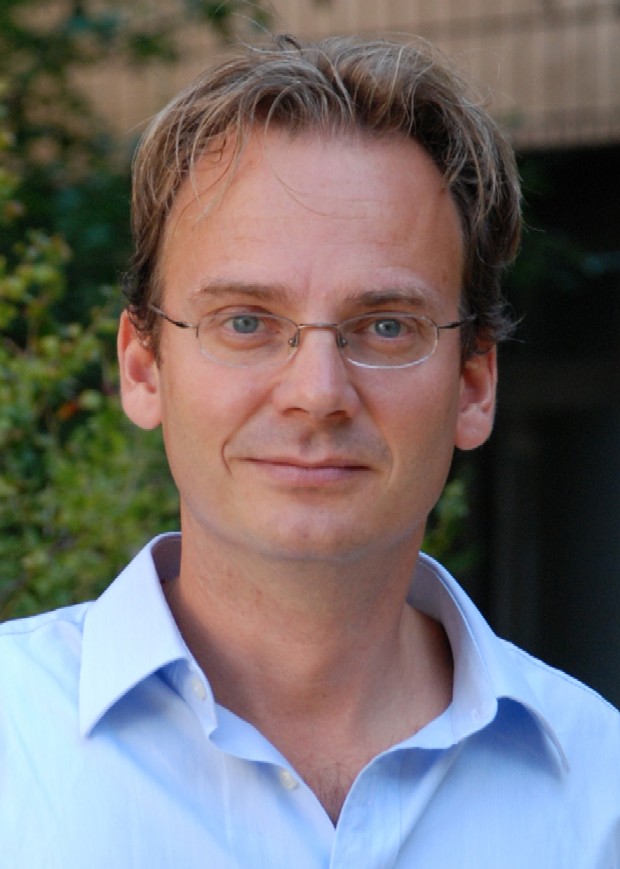
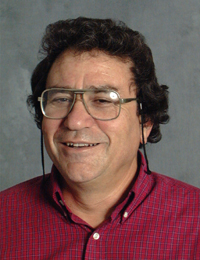
Eytan Domany
Computational Physics and Bioinformatics Group at Weizmann Institute of Science in Rehovot, Israel
Moving from Physics to Biology: the Upsides, Downsides & Unexpected Sides
Julie Suzanne Biteen
Biological Applications of Single-Molecule Imaging and Nanophotonics Assistant Professor, University of Michigan
Peering into Cells One Molecule at a time: Super-resolution studies of biomolecular structure, cooperativity, and dynamics in living bacteria
Single-molecule fluorescence brings the resolution of optical microscopy down to the nanometer scale, allowing us to unlock the mysteries of how biomolecules work together to achieve the complexity that is a cell. This high-resolution, non-destructive method for examining subcellular events has opened up an exciting new frontier: the study of macromolecular localization and dynamics in living cells. We have developed methods for single-molecule investigations inside live bacterial cells, and have used these techniques to investigate thee important prokaryotic systems: membrane-bound transcription activation in Vibrio cholerae, carbohydrate catabolism in Bacteroides thetaiotaomicron, and DNA mismatch repair in Bacillus subtilis. Each system presents unique challenges, and we will discuss the important methods developed for each system, in particular, a comparison of membrane-bound and soluble proteins, extensions to two-color imaging, and adaptations for studying live anaerobic cells.
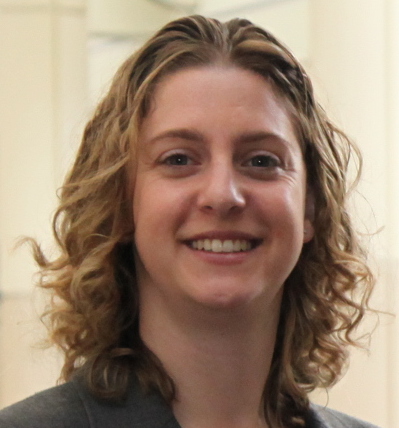

Vinod Subramaniam
Director of the FOM Institute AMOLF in Amsterdam
Getting A Grip On Alpha-Synuclein Amyloid Oligomers
Misfolding and aggregation of proteins into nanometer-scale fibrillar assemblies is a hallmark of many neurodegenerative diseases, including Alzheimer’s and Parkinson’s disease. A growing consensus suggests that early-stage oligomeric amyloid aggregates are significantly more cytotoxic than the fibrils, and play an important role in modulating the dynamics of protein aggregation, and in establishing a complex web of interactions with essential cellular components. However, very little is known about the molecular details of these aggregate species. We focus on elucidating structural and biochemical features of oligomers of the human alpha-synuclein protein, which is implicated in the etiology of Parkinson’s disease, using a range of biophysical approaches. We have recently developed a method that uses sub-stoichiometric labeling in combination with single-molecule photobleaching to determine the aggregation number of specific alpha-synuclein oligomers (Zijlstra et al., 2012). Complementary experiments using Tryptophan fluorescence spectroscopy and fluorescence correlation spectroscopy give us further insights into the gross structural features of these oligomeric assemblies. This talk will further also summarize our work on systematically studying the interaction of alpha-synuclein oligomers with lipid membranes, in an attempt to understand the mechanisms by which these oligomeric species may manifest cellular toxicity.
Ambarish Ghosh
Assistant Professor, Centre for Nano Science and Engineering, Indian Institute of Science, Bangalore
Optical and hydrodynamical effects in chiral nanostructures and their interplay
The ubiquitous influence of chirality in the biological world include the differential pharmaceutical activity of right and left handed drug molecules, locomotion of micro-organisms through rotation of helical (and therefore chiral) flagella, and many more. My talk will focus on a system of artificial chiral nanostructures that can be actuated with small magnetic fields to move through fluidic media similar to bacteria, and describe their rich dynamical behavior in isolation, as well as in collection. These structures can be engineered to have strong chiro-optical response, which can affect their dynamics in interesting ways.
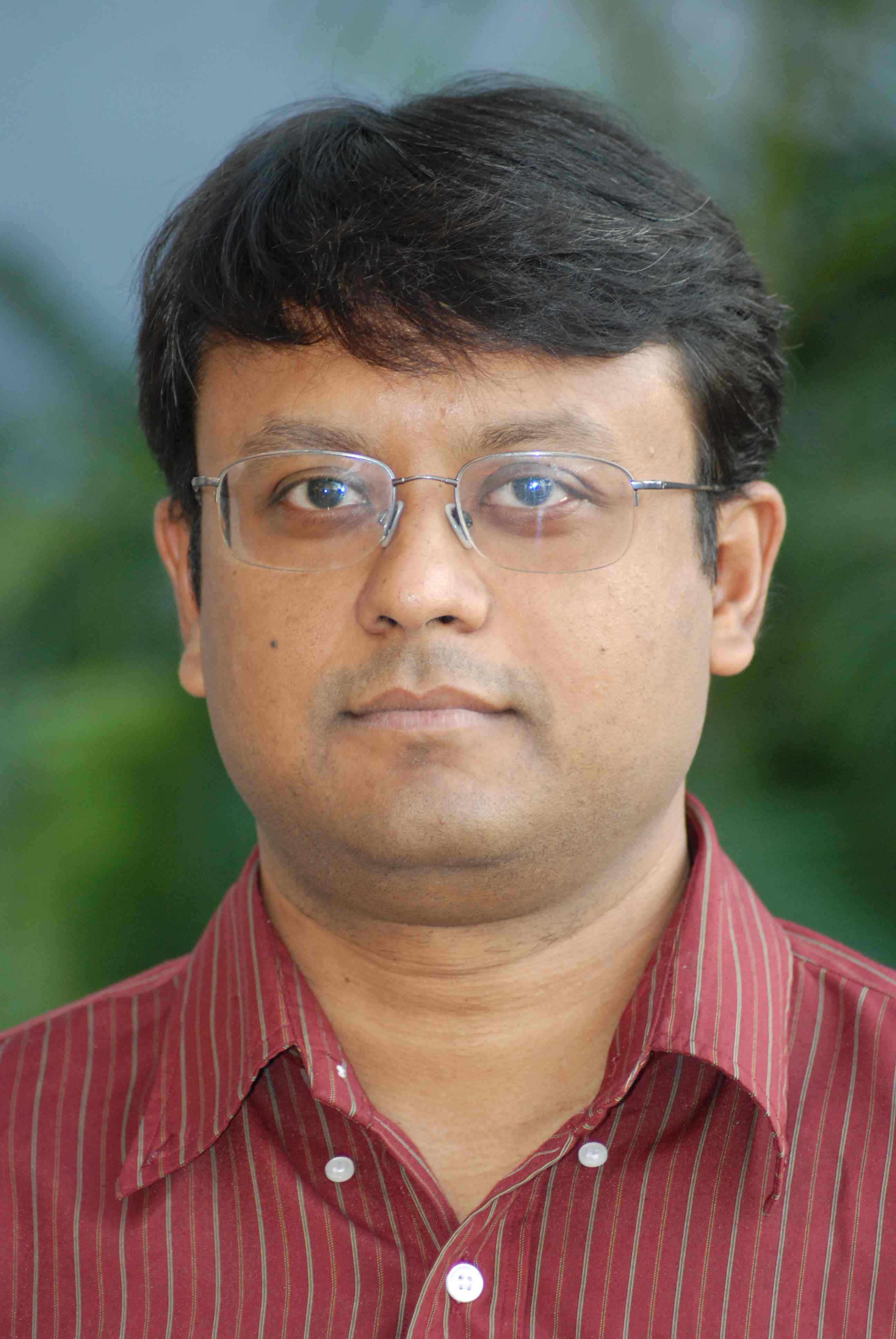
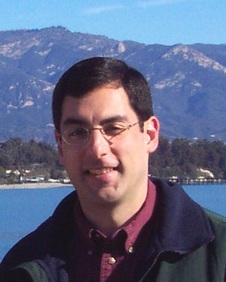
Everett A. Lipman
Experimental Biological Physics Associate Professor, Department of Physics, University of California, Santa Barbara
Probing the Mechanism of a Single Motor Protein with Molecular Instrumentation
The fundamental information processing required for growth and reproduction of living things is carried out by molecular motors moving along nucleic acids. By labeling DNA with regularly spaced dyes, we can create molecular instruments that produce periodic fluorescence signals correlated with the movements of individual motor proteins. These nanometer-scale devices, which are analogous to the optical encoders used in inkjet printers and other macroscopic machines, have several advantages: they are calibrated by the structure of DNA, they are mechanically decoupled from macroscopic apparatus, they communicate quantities of interest primarily by signal frequency and phase rather than absolute level, and the measurements they enable can have a combination of very high spatial and temporal resolutions. I will describe the synthesis of molecular encoders, measurements and modeling of two motor proteins involved in DNA replication, and some ideas for future experiments of this type.
Helmut Grubmüller
Max Planck Institute for Biophysical Chemistry
Opening of Third Infinity by the head of the IMPRS-PBCS
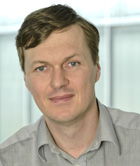
Selected speakers
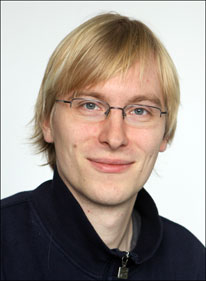
Christian Tetzlaff
Bernstein Center for Computational Neuroscience Göttingen
The interaction of synaptic plasticity and scaling and their role in memory formation
Memory storage in the brain relies on mechanisms acting on time scales from minutes, for long-term synaptic potentiation, to days, for memory consolidation. During such processes, neural circuits distinguish synapses relevant for forming a long-term storage, which are consolidated, from synapses of short-term storage, which fade. How time scale integration and synaptic differentiation is simultaneously achieved remains unclear. Here we show that synaptic scaling - a slow process usually associated with the maintenance of activity homeostasis - combined with synaptic plasticity may simultaneously achieve both, thereby providing a natural separation of short- from long-term storage. The interaction between plasticity and scaling provides also an explanation for an established paradox where memory consolidation critically depends on the exact order of learning and recall. These results indicate that scaling may be fundamental for stabilizing memories, providing a dynamic link between early and late memory formation processes.
Oliver Nagel
University of Potsdam
Influence of confined one-dimensional amoeboid motion on cytoskeletal polarization
We study the quasi one-dimensional motion of Dictyostelium discoideum amoebae inside narrow microfluidic channels with a cross section of 10 x 20 micrometer. While many cells perform a quasi one dimensional random walk with frequent switches in the direction of motion, we regularly observe cells that show a markedly different type of motion. They move persistently in one direction along the channel for more than half an hour without reversing their direction of motion. We perform laser scanning confocal imaging with a transfected Dictyostelium cell line that expresses myosin II-GFP together with LimE-mRFP, a marker for filamentous actin. Our experiments reveal a polarized structure of the cell cortex that differs from polarized cells in absence of confinement. We characterize this type of polarized cell motion using custom made software tools for cell shape analysis to monitor the dynamics of local protrusions and retractions on the membrane together with the accompanying intracellular distributions of actin and myosin II in the cell cortex.
The ubiquitous influence of chirality in the biological world include the differential pharmaceutical activity of right and left handed drug molecules, locomotion of micro-organisms through rotation of helical (and therefore chiral) flagella, and many more. My talk will focus on a system of artificial chiral nanostructures that can be actuated with small magnetic fields to move through fluidic media similar to bacteria, and describe their rich dynamical behavior in isolation, as well as in collection. These structures can be engineered to have strong chiro-optical response, which can affect their dynamics in interesting ways.


Jürgen Riedel
Carl von Ossietzky Universität Oldenburg
Quantifying emulation for computation universality in cellular automata
A system has the property of universality if it can emulate the behavior of any other system given the right initial condition. Following this idea one can start by identifying various localized structures and then using these structures as components, build up larger structures as needed. To show that a system is universal one may try to find different possible encodings of certain structures and use those to construct the behavior of others. For example one can investigate if an elementary cellular automata (ECA) of rule A can reproduce an ECA with Rule B. The main idea in doing so is to encode one cell of rule A into n - blocks of cells following rule B. With this concept one can show that that ECA rule 184 ends up being able to emulate ECA rule 90. But in contrast this is not in general possible.
In this talk we examine rule emulation of ECAs as well as more general cellular automata (GCA). CA are well known computational models for studying emergent collective behavior, complexity, randomness as well as interaction between order and chaotic systems. We are applying different measures like Shannon entropy, Kolmogorov complexity, and heat to categorize CAs and their rule emulation capabilities. The aim is to find new ways toward identify CAs which are capable of (Turing universal) computation.
Michael T. Dirnberger
Max-Planck-Institut für Informatik, Saarbrücken
Physarum computing: slime on shortest path
An interesting example of a biological system performing natural optimization is the true slime mold Physarum Polycephalum. This extraordinary unicellular organism, despite lacking any form of brain or nervous system, is able to solve various complex problems using a network-based, decentralized foraging strategy. In particular we investigate P. Polycephalum in the context of the well-known Shortest-Path problem. Based on a dynamical model incorporating a simple feed-back mechanism we show how an optimal solution is always found by the slime mold.

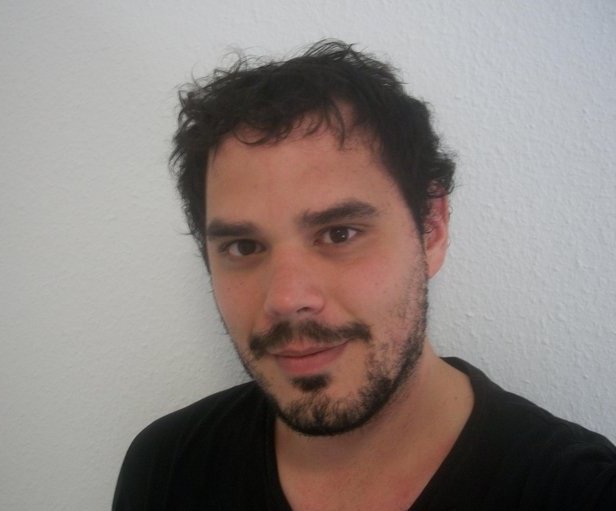
Enzo Tagliazucchi
Goethe University Frankfurt am Main
Human consciousness in the lens of statistical physics
Each millisecond the human brain performs the amazing feat of integrating and grouping complex sensory information and generating equally complex motor output. It is generally believed that during this process human consciousness and the ensuing subjective experience emerge from collective brain behavior.
Statistical physics provides a framework to quantify emergent behavior in many-body systems, yet this framework remains to be succesfully applied to the problem of consciousness. Here we will present new results that identify large-scale brain activity during different states of conscious awareness (wakefulness, light and deep sleep) with particular dynamical regimes. We will show that the dynamics of the awake human brain can be identified with a critical state [1,2], whereas deep sleep shows features typical of a system displaced from the critical point (such as loss of long-range temporal correlations [3] and impaired information integration [4]). These experimental results will be reproduced by modelling a simple excitable system unfolding on the network of realistic large-scale anatomical connections and studying its different dynamical regimes.
These results provide a first quantification of observables within a statistical physics framework, providing information on the dynamical regime observed during different conscious states. We anticipate that this approach could be fruitful to reveal how consciousness emerges from collective and extremely complex brain operations.
Anna Chizik
IIIrd Institute of Physics, Goettingen
Imaging of the single particles transition dipole moment using cylindrical vector beams
Semiconductor quantum dots and silica nanoparticles (NPs) gained increasing interest over the last years due to their wide range of applications. Although these quantum structures already find applications in optoelectronics and biological studies, some of their fundamental photo-physical properties are still not well understood [1]. Here, we present confocal microscopy studies on single SiO2 NPs, as well as Si/SiO2 and CdSe/ZnS core/shell quantum dots to reveal information on the excitation transition dipole moment (TDM) orientation and its dimensionality. We use a recently developed technique for determination of the TDM orientation of a single quantum emitter, based on confocal scanning microscopy in combination with cylindrical vector beams (also known as higher order laser modes) [2, 3]. Recording a fluorescence image of the sample surface, we acquire full information about dimensionality and 3-dimensional orientation of the TDMs of all the emitters in the selected region.
The obtained results demonstrate that single SiO2 NPs where the fluorescence originates from defects possess a linear TDM. Analysis of a big number of images reveals that the TDMs of the SiO2 NPs are isotropically distributed and that there is no preferred direction with respect to the sample surface. Moreover, image series of the same sample area revealed the possibility for some particles to change their dipole moment orientation from one image to another. The TDM of the spherical CdSe/ZnS quantum dots is isotropically oriented in three dimensions. In case of the Si/SiO2 core-shell quantum dots, we were able to observe two different types of the TDM. One type shows excitation patterns like the SiO2 NPs indicating a one dimensional TDM, while the other type shows an excitation pattern arising from the three dimensional TDM like in case of CdSe/ZnS quantum dots.

Created by Students of the International Max Planck Research School for Physics of Biological and Complex Systems in 2013 with much help of bootstrap.